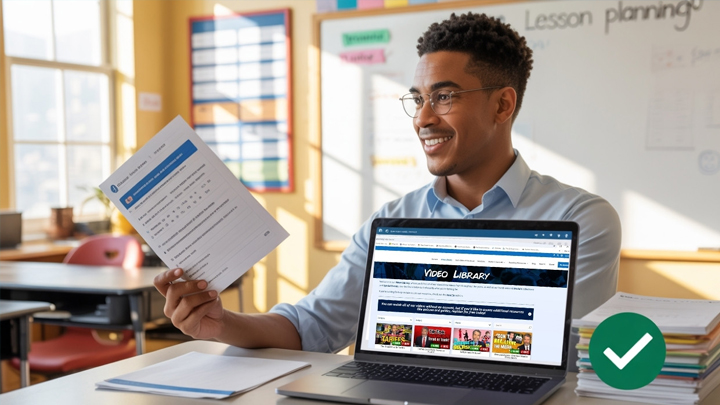Sign-Up to Receive the Latest Updates
Not ready to register a free account yet, but still want to keep up with Stossel in the Classroom? Sign up for our Ideas in Action Newsletter!
In today’s classrooms, teachers are balancing lesson planning, grading, parent communication, and the growing need to integrate technology into instruction. Artificial Intelligence (AI) and other digital tools can be powerful partners in making your job easier and your lessons more effective. Whether you’re new to AI in the classroom or already experimenting with digital resources, these teacher-tested technology tips will help you save time, personalize learning, and keep students engaged.
Below are five practical AI and tech hacks for teachers that you can start using right away—no advanced tech skills required.
- Extract Text from Part of a PDF
Need only one section of a PDF instead of the entire document? Skip the tedious retyping and pull the exact text you want. This is especially helpful when adapting digital reading passages for lesson plans or differentiated instruction.
How to do it:
- Open the PDF and zoom in on the section you want.
- Take a screenshot (Windows: Windows Key + Shift + S; Mac: Command + Shift + 4). Or use the snipping tool to capture the image.
- Paste or upload that screenshot into ChatGPT or another OCR (Optical Character Recognition) tool.
- Ask: “Please extract the text from this image.”
- Copy and paste the result into your classroom materials.
- Differentiate Reading Levels of a Text
Differentiation is one of the most powerful uses of AI for teachers. You can instantly adapt a text to multiple reading levels, ensuring every student has access to the same core content.
How to do it:
- Paste the original text into ChatGPT or another AI tool.
- Ask: “Rewrite this passage at three reading levels: elementary, middle school, and high school.”
- Review and tweak for accuracy.
- Distribute the right version to the right students for personalized learning.
- Generate Quick, Clear Summaries for Students
Use AI to create simplified summaries that help struggling readers, English language learners, or students who need a review. These summaries can also double as study guides.
How to do it:
- Copy the article or excerpt into ChatGPT or similar AI software.
- Ask: “Summarize this text in 5 key bullet points for a middle school audience.”
- Optionally request a visual outline or infographic to make it more engaging.
- Create Instant Comprehension Questions
AI can quickly turn any reading into a set of comprehension questions, freeing up your prep time for more interactive classroom activities.
How to do it:
- Paste the text into ChatGPT or similar AI platform.
- Ask: “Create 5 comprehension questions and an answer key for this text, for a 9th-grade reading level.”
- Review for accuracy and make any necessary adjustments.
- Turn Text into Practice Quizzes or Flashcards
Great for formative assessment, test prep, or at-home practice. AI can transform any passage or vocabulary list into ready-to-use quizzes or digital flashcards.
How to do it:
- Provide the text or vocabulary list to AI.
- Ask: “Create a 10-question multiple-choice quiz with correct answers marked, based on this material.”
- Or: “Create digital flashcards with term on one side, definition on the other, in CSV format for Quizlet.”
- Import the file into your preferred quiz or flashcard platform.
Final Thoughts for Teachers
Technology for teachers doesn’t have to be overwhelming, and AI can be a game-changer when used strategically. Start small—try one of these tools during your next lesson planning session—and see how it saves you time while improving student learning.
If you’re looking for free teacher resources, AI-friendly classroom ideas, and lesson plans that integrate technology, check out Stossel in the Classroom. You’ll find classroom-ready videos, assignments, and activities designed to make teaching easier and more engaging.

